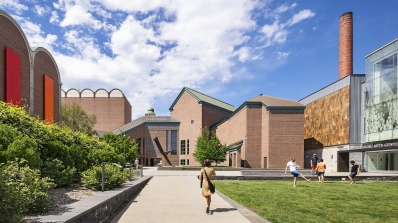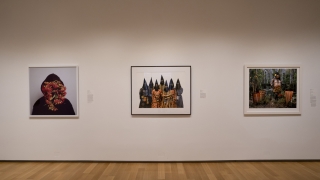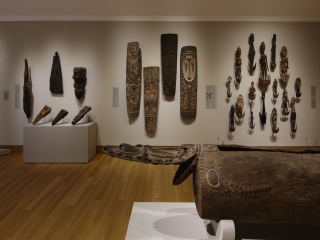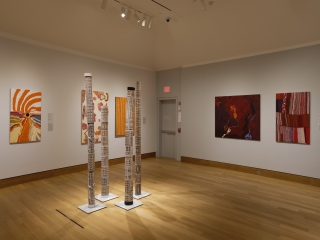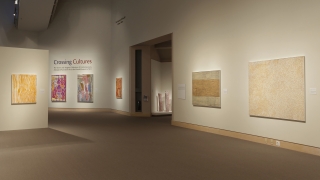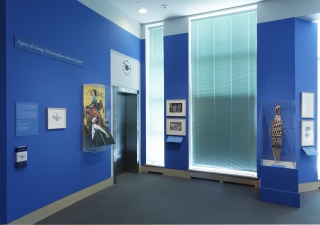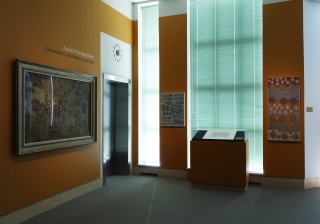Exhibitions Archive
Contemporary Indigenous Australian Photography
Shifting the LensDrawing from the Hood Museum’s collection of Indigenous Australian art, Shifting the Lens features photography by Christian Thompson, Fiona Foley, Bindi Cole, Michael Cook, Darren Siwes, Tony Albert, and Michael Riley that interrogates and conveys the multidimensionality of Indigenous Australian experiences.
The Sepik River and Abelam Hill Country
Melanesian Art
The art of Melanesia is a particular strength of the Hood Museum of Art's collection, and the museum's primary holdings are from the island of New Guinea in the southwestern Pacific. The objects in this gallery offer a window into the region's traditional religions, people's ideas about the supernatural world, and the social relationships of people living within the traditional societies located in the Sepik River region and Abelam Hills in the northern part of the island.
A World of Relations
This selection of works from the Hood's Owen and Wagner Collection of Aboriginal Australian Art explores a series of relationships between spouses, siblings, parents, and children, as well as those bonded by shared lands or experiences. Family ties run deep in Indigenous Australian art. And yet, for Indigenous Australians, the concept of kinship is more than simply genetic: it is the basis for a complex cosmology that unites all things in the universe.
This exhibition highlights the extraordinary Owen and Wagner Collection at the Hood Museum of Art, Dartmouth College, through its display of more than one hundred works of contemporary Indigenous art from Australia. These objects are by artists from outback communities as well as major metropolitan centers and span five decades of creative activity. They also represent the many art-making practices of Aboriginal peoples across the Australian continent, including acrylic paintings on linen and canvas, earthen ochre paintings on bark, board, and canvas, and sculpture in a variety of media. While the exhibition features many influential artists who have contributed to the development of an Indigenous art canon since the 1970s, the focus is squarely on subsequent generations of artists, who are breathing new life into ancient stories and broadening the possibilities of Indigenous art. The exhibition therefore also includes contemporary paintings that recall the ancestral narratives of the Dreaming as well as photographs from urban-based artists who depict the contemporary realities of Indigenous people from Australia. Resonant with cultural memory, these objects reference and reinvigorate customary iconographies, speak to the history and legacy of colonization, and affirm Robert Hughes's statement that Aboriginal art is "the last great art movement of the twentieth century."
Metamorphosis and the Feminine
Agents of Change
This installation features seven works of art which touch upon moments of feminine metamorphosis. In them, women are agents of change: they cause change and/or are changed themselves. Through these works, the unique relationship between the feminine and transformation becomes clear, and metamorphosis in turn becomes an act that can emancipate women from the confines of their traditional gender roles, to one degree or another.
Grounded in an Infinite Landscape
Aerial Perspectives
The works of art in this exhibition are all abstracted depictions of landscapes from an aerial perspective, a point of view that draws us into the work through an intensified experience of the entire composition. They all share the same basic focus, evoking some geographical construct or another, and a sense of place. While they have a visually abstract quality, this does not mean that we become lost. Rather, the means through which the artists masterfully render their subjects (including line, color, light, shadow, volume, and depth) encourage us to take an active role in these works’ realization. They ground us, ironically, as we examine them from every angle, following the symphony of marks along the surface and subconsciously constructing the imagined landscape both within and beyond the edges of the frame.
